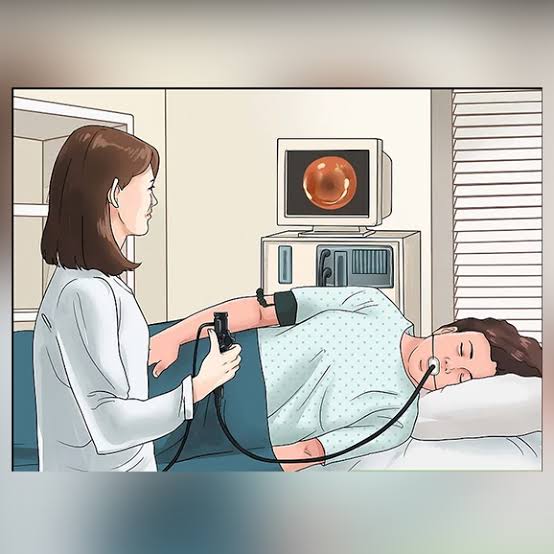I am back with the concluding part of the PUD post. Just in case you missed the first post, you could check it out via the link below.
As I previously mentioned, many saddled with the Peptic Ulcer burden, know nothing about preventive measures and best management practices.
I would give a superficial approach to the management of PUD, but it is still very paramount to seek proper medical care and avoid self-medication, please.
But before we forge ahead, there is something you should know.
There are some red flag symptoms that indicate the severity of peptic ulcer disease. They are called ALARM symptoms and should definitely not be ignored!
The acronym VBAD is usually used for ease of remembrance.
Vomiting, bleeding/anemia, abdominal mass or unintended weight loss, and dysphagia (difficulty swallowing).
Immediate hospital admission is required if two or more of these symptoms are present.
So, when PUD is suspected, how do you make a diagnosis/confirmation?
DIAGNOSIS OF PEPTIC ULCER DISEASE
Peptic Ulcer most times could be considered a clinical diagnosis. A detailed medical history, and good physical examination may suggest the presence of peptic ulcer.
Taking it a step further, Laboratory tests can be done to rule out the dreaded H. Pylori infection. This would come in very handy to inform a proper treatment regimen.
These investigations may include;
A blood test for H. Pylori, where a patient is bled and the blood sample is checked for the said micro organism.
The Urea breath test; Don’t bother your pretty little head about how this test works, you can leave this to the medics.
Stool test; Where a sample of the stool is examined for Helicobacter pylori.
The managing doctor may also order a test called a barium swallow/ GI series. This particular test involves drinking a solution with a small amount of liquid material that easily shows up on an X-ray.
Several X-rays would be taken to see how the solution moves through the digestive system. This test allows the detection of conditions that affect the esophagus, stomach, and small intestine.
It is important to emphasize that the presence of an ulcer can only be determined by looking directly at the stomach with endoscopy.


During endoscopy, the doctor passes a hollow tube equipped with a lens (endoscope) down the patient’s throat into the esophagus, stomach and small intestine.
Using the endoscope, it is easier to detect ulcers. However when detected, a small tissue sample (biopsy) may be removed for examination in a lab. A biopsy can also identify whether H. pylori is present in the stomach lining.
Doctors are more inclined to recommending endoscopy for older patients, and people with signs of bleeding. They also recommend it to those that have experienced recent weight loss or difficulty eating /swallowing (which are some of the alarm symptoms mentioned earlier.)
If the endoscopy shows an ulcer in the stomach, a follow-up endoscopy should also be carried out after treatment to confirm that the ulcers have healed completely, even when it seems like symptoms have disappeared.
PUD MANAGEMENT
The treatment of peptic ulcer disease is majorly dependent on causative factors( i.e presence or absence of H.pylori)
It would usually involve killing the H. pylori bacterium if present, eliminating or reducing the use of NSAIDs, and helping ulcers heal with medication.
If H. pylori is found in the digestive tract, via the stool/ blood test, a combination of antibiotics would be recommended to kill the bacterium.
These may include amoxicillin (Amoxil), clarithromycin (Biaxin), metronidazole (Flagyl), tinidazole (Tindamax), tetracycline and levofloxacin.
Most times, two of the aforementioned antibiotics are used in combination with one Proton pump inhibitor (i.e omeprazole, Lansoprazole)
This medication regimen is known as triple therapy.
Proton pump inhibitors are medications that reduce stomach acid by blocking the action of the parts of cells that produce acid.
Your doctor may also prescribe medications called antacids which neutralize stomach acid or medications/gels that could help to protect the inner lining of the stomach.
Some preventive measures could be taken to reduce the occurrence of peptic ulcers such as
- Reducing alcohol consumption
- washing your hands frequently to avoid infections
- limiting your use of NSAIDS
Maintaining a healthy lifestyle by quitting smoking of cigarettes and other tobacco use as well as eating a balanced diet rich in fruits, vegetables, and whole grains will help to prevent developing a peptic ulcer.
If left untreated, PUD could lead to a life-threatening condition such as internal bleeding, perforation, or intestinal obstruction and thus become a medical emergency.
So please, get that disturbing abdominal pain checked today, it just might be peptic ulcer. Delay is dangerous!











